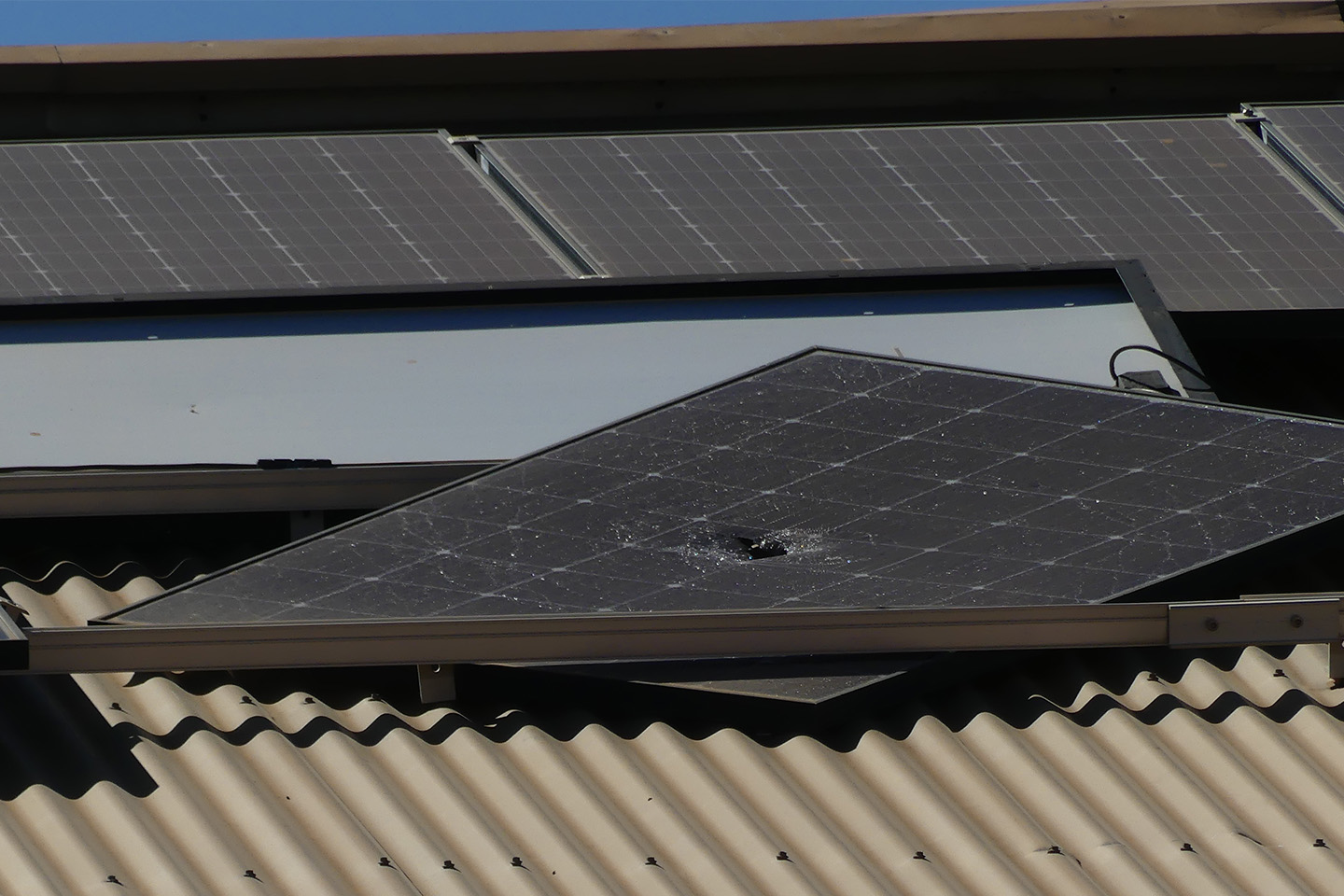Solar generation of electricity is playing an increasing role in our sustainable energy solution. However, it will only be truly sustainable if the solar systems can withstand the same wind speeds as the buildings they are associated with.
The Engineers Australia Building Safety Taskforce in WA coordinate responses to damage investigations after high wind events. As a result of these investigations the group has found some solar panel systems are failing under wind actions.
Three different failure modes have been identified:
- The solar panel fails as a plate under the differential pressure across the glass. This is particularly common in inclined panels.
- The clamp and rail systems that secure the panels can fail and release whole panels. These panels are particularly significant wind-borne debris items and deliver much more energy than the representative debris item in AS/NZS 1170.2. They can cause significant damage to other panels or buildings in the vicinity.
- The wind actions on roof-mounted solar panels may increase the total wind loads on the structure of the building to which they are mounted. In some cases, the higher structural wind actions have led to building failures under the solar panels.
The taskforce has suggestions to improve the resilience of new solar panel installations including:
- Design the solar panels to resist wind forces based on the same Annual Exceedance Probability (AEP) as the building under or near the solar panel installation. Calculate the design wind speed based on this AEP, the wind region and the site characteristics (terrain, height of installation above ground, topography and shielding).
- Use the information in Appendix B.6 in AS/NZS 1170.2 for pressure coefficients that can be used to evaluate the differential pressure across the solar panels.
- Select panels that are rated for the appropriate net pressures.
- Design all clamps, rails and brackets for the net pressures you have calculated.
- If the panels are roof-mounted, check the roof structure for additional wind loads from the solar panels added to the roof pressures using Appendix B of AS/NZS 1170.2. Pay particular attention to local pressures on edge solar panels and loads from inclined panels.
The taskforce recommends consulting your state or territory building regulator for advice on building approvals and compliance with building standards.
The National Construction Code includes the following performance requirements for structural reliability “a building or structure, during construction and use, with appropriate degrees of reliability must”, among other things, “avoid causing damage to other properties”.
Designing solar panels and their supports to the same design criteria as those for nearby buildings should meet the performance requirement. This would also meet community expectations for safety, health and amenity.

